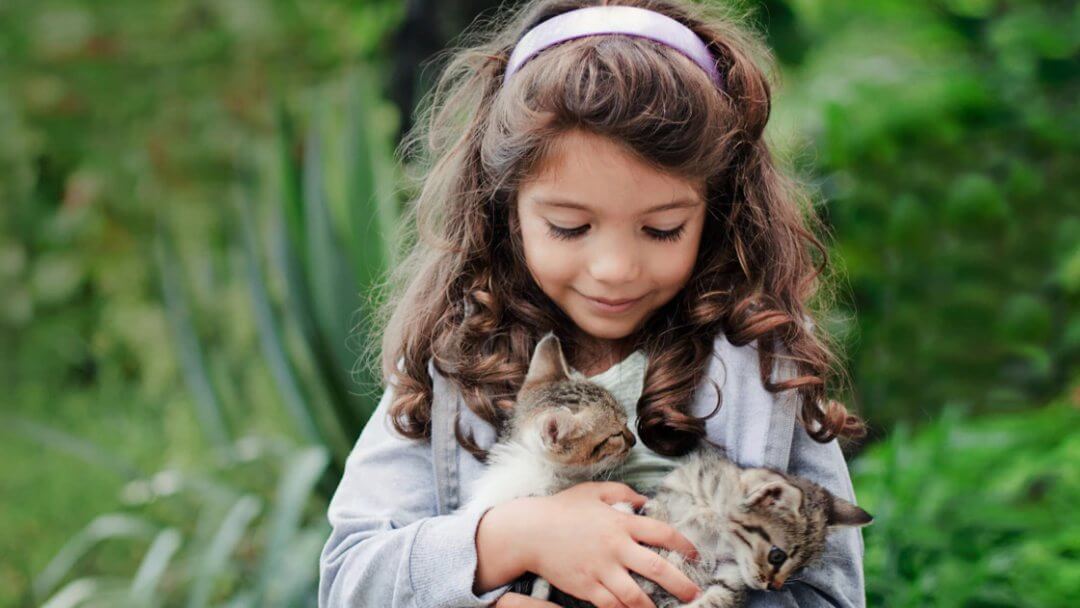
Training to Find Your Cat's True Potential
At Purina, we believe that cats are capable of a lot more than we might think. There are many preconceived notions about cats, like they aren’t social or can’t be trained. Cats are built for activity and training can provide them with mental stimulation. That’s why we’re always looking for new ways to train pets to unlock their true potential.
Training Methods
Most cats will respond to food rewards, which are a type of positive reinforcement. If your cat has performed a certain task you have asked of her, make sure you not only reward her with a food treat but with verbal praise as well. You will have more success if you work with one command at a time. As with any kind of training you have to be consistent and let your cat work at her own speed. When you see even the slightest glimmer that your cat understands the behaviour you are trying to teach, reward her enthusiastically.
CLICKER TRAINING
CLICKER TRAINING
Some veterinarians and behaviourists recommend clicker training for cats. With the aid of a small “clicker” device, which you click audibly when the cat performs the desired task, a cat can learn quite a few commands. To begin, get your cat’s attention, click the device, and then reward the cat with a small piece of food or a treat. (Make sure to account for these treats and food in your cat’s normal nutritional allowance for the day.) When your cat associates the sound of the clicker with something positive, she’s ready to start clicker training to learn commands. Any time a cat demonstrates the desired behaviour, click the clicker once while the behaviour is occurring. At the beginning you will have to use the clicker and the food rewards. Eventually, just the sound of the clicker will be enough to act as a reward.
COME WHEN CALLED
Use your cat’s name followed by the command “come.” When she comes, praise her lavishly and give her a treat or use your clicker. Eventually, your cat will associate the food, treat, or clicker with the command, and she’ll readily come when called.

WALK ON A LEASH
Training a cat to walk on a leash is not only possible, but can open a window to a whole new world for your cat. Leash walking can strengthen the bond between you and your cat and allow her to explore the outdoors safely.
1. The first step in training a cat to walk on a leash is to get the cat used to the harness she’ll have to wear. First, put the harness somewhere where your cat can see it and examine it. Leave it there for a few days. Next, put the harness on your cat just before feeding time, so that she associates something positive with the harness. You can also use a treat, rather than regular mealtimes, for this step.
2. When she’s comfortable with the harness, attach the leash, but don’t use it for anything yet. Just allow the cat to see and experience the feeling of the leash while you walk behind her, holding it loosely, for short periods.
3. When your cat is comfortable with the leash, set her down and walk to end of the leash. If she follows you, praise and reward her, using the clicker if desired. If she doesn’t follow you, pull gently on the leash (but don’t jerk it), and wait until the cat takes a few steps toward you. When she does, praise and reward her. Be patient – it may take a while for the cat to come toward you.
4. Keep repeating this process, and reward your cat with a piece of food (and a click, if you’re using a clicker) when she moves forward with you.
5. Be patient. It may take a lot of repetition of these slow steps before your cat understands what you want her to do. When she’s very comfortable with the process, and walks with you at a normal pace, try taking her outside. When you do go outdoors, she’ll be very distracted by her new environment, and could be frightened. Start in a quiet, secluded area and allow her to look around and explore before trying to go for a walk. Your cat may never walk like a dog does, heeling and keeping pace, but rather may always want to explore, sniff, and wander a little as you go along. Take things slowly, and she may discover that walking on a leash is her new favourite activity.















